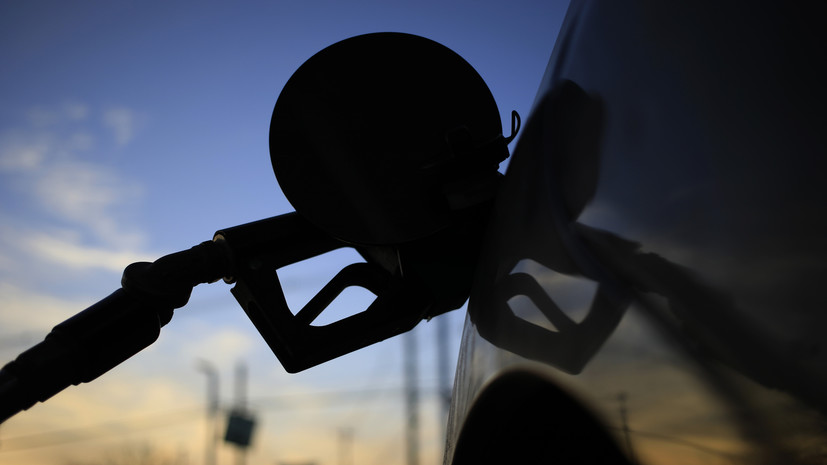On Wednesday, May 17, the exchange price of AI-95 gasoline in the European part of Russia updated the historical maximum and approached 61.41 thousand rubles per ton. At the same time, the cost of AI-92 fuel for the first time since November 2021 rose to 52.99 thousand rubles per ton. This is evidenced by the data of the St. Petersburg International Mercantile Exchange.
Since the beginning of spring, AI-95 fuel on the trading floor has risen in price by more than a third, and AI-92 stock quotes have risen by almost a quarter. One of the reasons for the observed dynamics could be seasonal factors, experts say.
"In the spring, Russian refineries traditionally stop for scheduled repairs, as a result of which the supply of fuel in the domestic market may decrease. At the same time, the volume of fuel consumption in the country, on the contrary, is increasing, "Andrei Loboda, economist and communications director at BitRiver, told RT.
Thus, a certain imbalance of supply and demand could form in the fuel market, which led to an increase in the price of gasoline on the exchange, the specialist explained. In addition, according to the analyst, prices could respond to reports of the government's plans to adjust the damper mechanism.
Recall that the so-called damper started working back in 2019. As part of the initiative, the state compensates oil companies for lost revenues when supplying fuel to the domestic market.
If fuel prices in Russia are lower than export prices, producers receive compensation from the federal budget. With a higher cost of raw materials within the country, business, on the contrary, deducts part of its profits to the treasury. This principle avoids sharp jumps in the cost of fuel for consumers.
As follows from the materials of the Ministry of Finance, in 2022, payments to companies for the damper from the budget more than tripled and amounted to 2.17 trillion rubles. At the same time, from January to April 2023, the state has already reimbursed about 361 billion rubles to businesses.
Meanwhile, according to Russian Finance Minister Anton Siluanov, to date, payments under the damper, in fact, have become an additional source of income for oil workers. Under these conditions, the authorities decided to slightly change the parameters of the mechanism.
"The margin of oil refiners today is 8 thousand rubles per ton. Previously, it was less than 2 thousand rubles. If you look at where this margin comes from, it's due to the damper. In fact, we pay this margin of oil refiners from the budget. The Ministry of Finance cannot pass by this. It needs to be corrected, "TASS quoted Siluanov as saying.
In particular, the authorities propose to "halve the margin" of companies. To do this, it is planned to halve the amount of damper payments from July 1 for a year.
"This will give us savings in oil and gas revenues and, accordingly, reduce the shortfall in these revenues to the budget. About 30 billion rubles a month, "said the head of the Ministry of Finance.
At the same time, as the minister emphasized, oil companies should not raise prices for ordinary consumers in an attempt to compensate for lost revenues. This will be monitored by the Federal Antimonopoly Service, Siluanov added.
- Gettyimages.ru
- © buzbuzzer
It is noteworthy that against the backdrop of a record increase in stock prices, the retail cost of fuel in Russia continues to remain relatively stable. According to Rosstat, since the beginning of spring, the price of a liter of AI-95 at gas stations in the country has increased by an average of 0.45% to 51.62 rubles, while a liter of AI-92 has risen in price by 0.51% to 47.38 rubles.
"The FAS can fine sellers if prices are inflated unjustifiably. That is why gasoline rises in price much more slowly in retail than on the stock exchange, where the cost is determined by the ratio of supply and demand, and therefore is more susceptible to fluctuations, "Vladimir Chernov, an analyst at Freedom Finance Global, explained to RT.
According to the expert, the authorities will continue to take measures to curb retail gasoline prices, so in 2023 fuel at gas stations will rise in price at a rate not higher than the inflation rate. A similar point of view was expressed in a commentary to RT by Kirill Dronov, managing director of Alfa-Forex.
"At the moment, gasoline prices in Russia depend on the state tax policy. Most likely, we will see a moderate increase in fuel prices within the inflation corridor predicted by the Central Bank - 4.5-6.5%," the analyst concluded.

